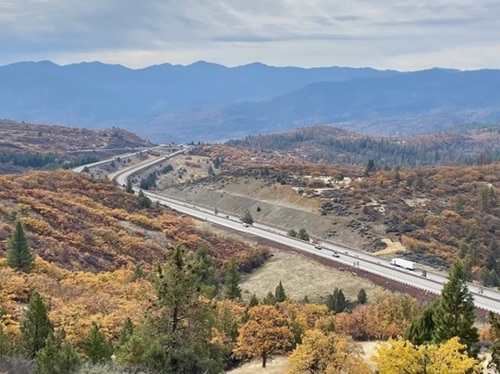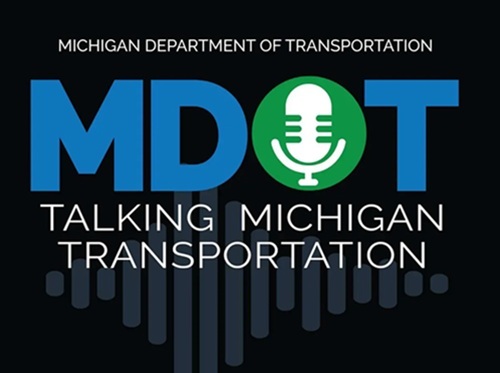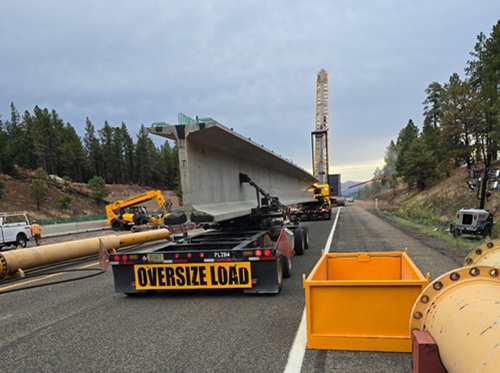The Oregon Department of Transportation plans to build the first wildlife overcrossing of Interstate 5 in the wildlife-rich Mariposa Preserve in the Cascade Siskiyou National Monument, thanks to a $33.2 million federal grant.
[Above photo by Oregon DOT]
The agency said it has been planning the crossing for years to help reduce vehicle-wildlife collisions. Now, with the help of a grant from the Federal Highway Administration, the Oregon DOT can move to the environmental stage of the project, noted agency spokeswoman Julie Denney.
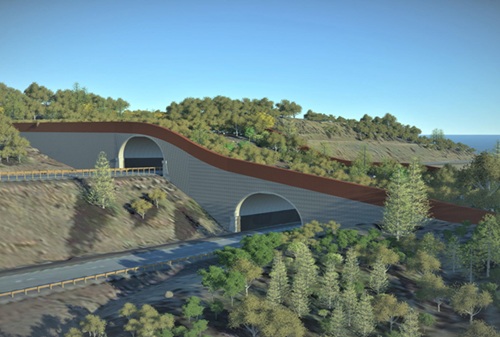
“We have completed the design, and we are scheduled to begin construction in the 2028 construction year,” she said; noting that the agency will be contributing $3.8 million to this project.
“With this significant investment of federal funding, [we] can now provide a new connection for wildlife in an ecologically diverse area,” added Oregon DOT Director Kris Strickler in a statement. “This will improve safety for drivers on I-5 by reducing wildlife collisions. I want to thank our federal partners for making this project possible by fully funding ODOT’s grant request.”
The crossing will be about two miles north of the California border; a mountainous area inhabited by elk, deer, bear, and mountain lions. Existing culverts and areas under bridges on I-5 were poor candidates for development as wildlife underpasses, so Oregon DOT said it opted for an overcrossing, the state’s first such project.
“We’ve had successes with wildlife underpasses, most of which are in central Oregon along U.S. 97,” Denney noted. In those areas, she explained, “it’s much easier to tunnel beneath a highway there than it is in the mountains, which is a lot of rock.”
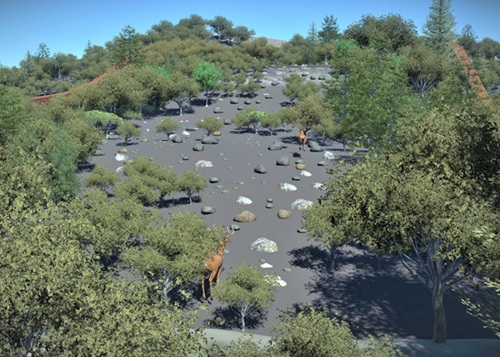
There are about 6,000 vehicle-wildlife collisions each year on Oregon roads, the agency noted, and underpass wildlife crossings in Oregon have reduced those collisions in those areas by 86 percent; saving not only the animals, but significant money for the vehicle owners.
According to Oregon DOT, a collision with a deer can cost about $9,000; a run-in with full-sized elk can cost $24,000 in repair costs, towing, and medical expenses.
The I-5 crossing will be designed to resemble the natural surroundings, with trees, rocks and animal trails, according to an artistic rendition. Along each side of I-5, the project will include several miles of north-south fencing to funnel the wildlife to the crossing.
“We are excited about this project,” Denney said. “We feel we are catching up with other states and countries on crossings to protect these animals.”
ODOT worked with the Southern Oregon Wildlife Crossing Coalition, a group of governmental, nonprofit and tribal partners, that supported the wildlife crossing. The coalition produced a video about the crossing last year.
The grant to Oregon DOT was one of several the FHWA issued to state departments of transportation via its Wildlife Crossings Pilot Program in December 2024; a program funded by the Infrastructure Investment and Jobs Act of 2021. Other state DOTs that received grants include:
- $626,659 to the Alaska Department of Transportation and Public Facilities to conduct a study that will develop a comprehensive solution to preventing vehicle collisions with moose along Glenn Highway; the state’s busiest highway.
- $565,800 to the Arizona Department of Transportation to develop an online Geographic Information System or GIS mapping tool that will help identify wildlife-vehicle collision hotspots, analyze data about collisions, identify wildlife corridors for habitat connectivity, develop and prioritize projects, and build cost estimates to support future wildlife mitigation projects.
- $6.1 million to the Florida Department of Transportation for a wildlife crossing and fencing along US-27 in southern Highlands County near the community of Venus.
- $2.2 million to the Georgia Department of Transportation to develop an institutional framework that will integrate wildlife-vehicle reduction measures and habitat connectivity goals into transportation project planning and construction.
- $21 million to the Idaho Transportation Department for three wildlife underpasses with eight-foot-tall fencing along six miles of US-30 at Rocky Point in rural Bear Lake County.
- $9.3 million to the Maine Department of Transportation for a wildlife crossing using a pre-cast concrete arch culvert to provide passage for moose, deer, and other large wildlife in the city of Caribou.
- $387,424 to the Maryland State Highway Administration – a division of the Maryland Department of Transportation – to develop a comprehensive plan designed to reduce wildlife-vehicle collisions statewide.
- $1.7 million to the Massachusetts Department of Transportation to fund pre-construction design and permitting for a wildlife crossing project along the Appalachian Trail over Interstate 90 through western Massachusetts.
- $467,376 to the Michigan Department of Transportation to collect ecological and transportation data needed to identify roadways that present the greatest risk to motorists and wildlife.
- $900,000 to the Missouri Department of Transportation to design and construct multiple wildlife vehicle mitigation projects along Interstate 70 and Interstate 64.
- $424,242 to the Montana Department of Transportation to study and develop plans to reduce wildlife vehicle collisions along 30 miles of US-93 from the Idaho border to Darby, MT.
- $16.8 million to the Nevada Department of Transportation to build 61 wildlife crossings along US-93 and install 68 miles of barrier fencing aimed at reducing wildlife-vehicle collisions while connecting critical habitat for the federally- threatened Mojave Desert tortoise.
- $323,850 to the New York State Department of Transportation to conduct a two-phase study about wildlife-vehicle collisions and ways to improve habitat connectivity.
- $25 million to the North Carolina Department of Transportation for multiple wildlife underpass structures and fencing along US-64 in the Alligator River National Wildlife Refuge in Dare County.
In 2023, the FHWA issued $110 million in grants via the first round of disbursements through this program to 19 wildlife crossing projects in 17 states, including four projects overseen by Native American tribes.

